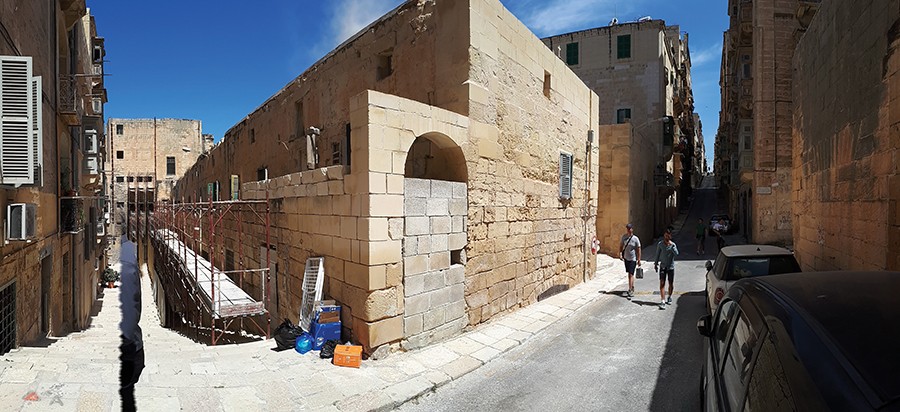Even though philosophers like Kant and Schiller of the aesthetic tradition never had the opportunity to troll some noobs in Call of Duty or slay a dragon in Skyrim, their views on the concept of play can be critical to our understanding of how the player relates to the game world. Dr Daniel Vella explores the work of aesthetic and existential philosophers. Words by Jasper Schellekens. Continue reading
Luminex xMAP®: Enhanced lab efficiency
Stereotypical depictions of researchers involve crazy hair, oversized goggles, shabby lab coats, and loads of test tubes. While the first three may be exaggerated, the sheer volume of tubes and wells needed in a lab cannot be overstated, especially when the lab is dedicated to anything biological.
One tissue sample can be used for a gamut of tests, all of them attempting to identify something different in it, be they antibodies, DNA, or RNA (biomarkers). Often, many samples are required due to all the tests needed to highlight the variations in those biomarkers. But the size of samples is now decreasing thanks to machines like the Luminex System running xMAP technology.
The Luminex System is a research/clinical diagnostics platform that allows detection of multiple analytes in a single well of a microtiter plate—100 or more reactions using a single drop of fluid.
Multiplex assays are widely used in experiments investigating the characteristics of molecules within a biological sample. This approach can be used to see whether an experimental treatment works, or what changes a DNA mutation causes in the molecules or molecular pathways within cells.
In real terms, this machine allows for analyses to be done to determine whether or not a patient has a particular disease or gene variant in their blood that would prevent a drug from being effective. It also allows them to determine the ideal dosage for those drugs. The machine can also be used to identify and characterise viral infections.
A particular research group at the University of Malta, headed by Prof. Godfrey Grech, has used Luminex xMAP technology to develop novel markers which are allowing them to classify a subset of triple-negative breast cancer
patients.
By identifying these biomarkers, it may be possible in future to detect the disease earlier and give patients better-targeted therapy.
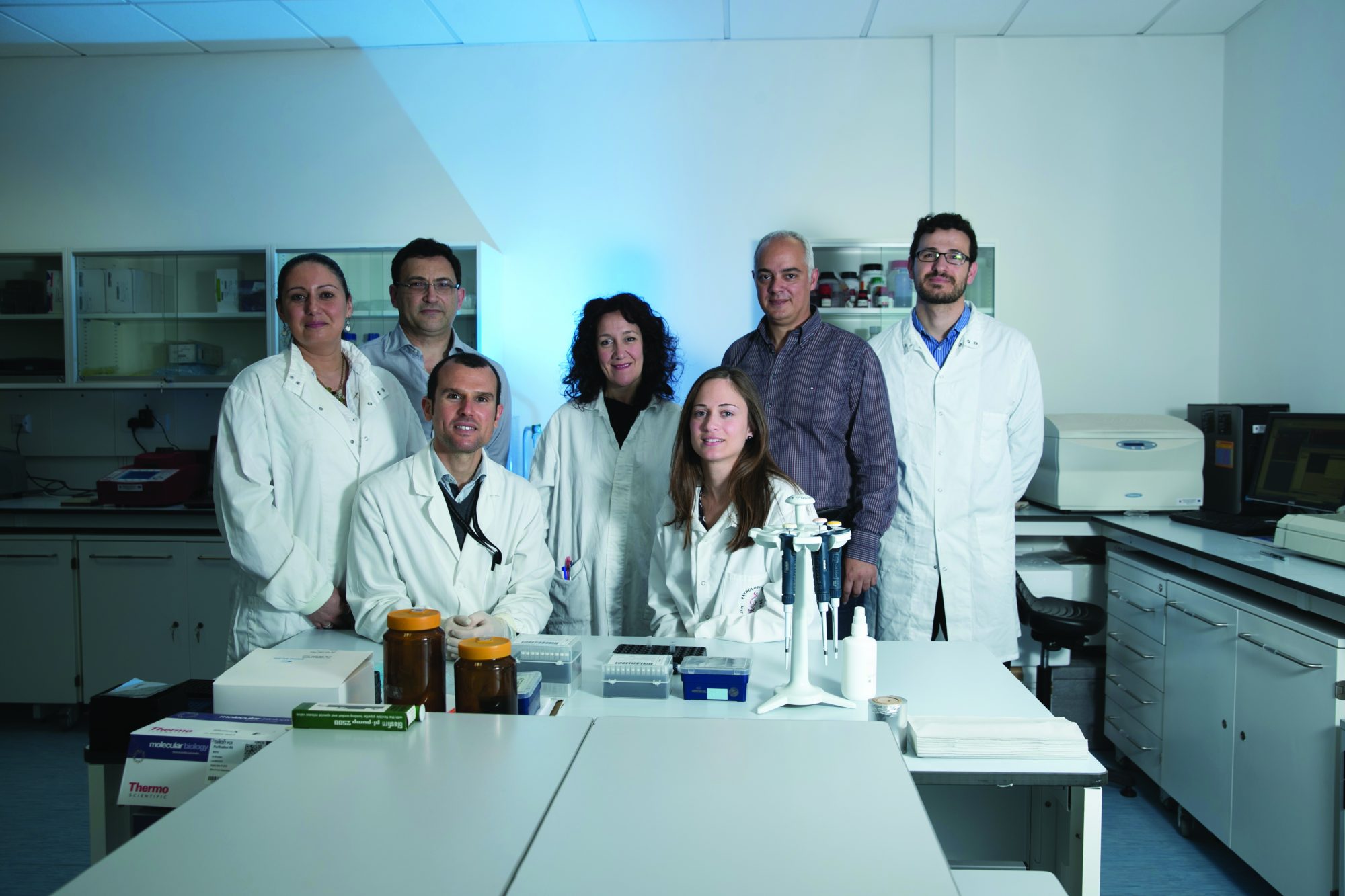
Author: Prof. Godfrey Grech
The Philosophy of Creativity
In this age of specialisation, finding a niche is key to most people’s career progression. But it is not the only way. Cassi Camilleri sits down with philosopher poet Prof. Joe Friggieri to gain insight into his creative process.
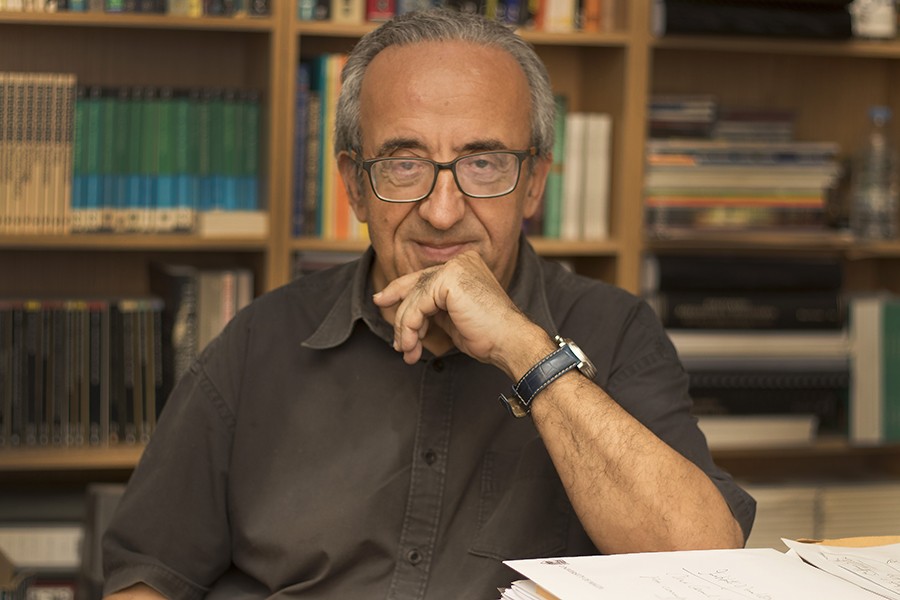
It was a very warm April day when I found myself sitting in front of Prof. Joe Friggieri. My heart was racing—I had just run up three flights of stairs for a rescheduled meeting after having missed our first earlier in the day. I had lost track of time while distributing magazines around campus. My eyes briefly scanned his library, wishing it was mine, then got right down to the business of asking questions.
Friggieri balances between two worlds: the academic and the creative. His series Nisġa tal-Ħsieb, the first history of philosophy in Maltese, is compulsory reading for philosophy students around the island. His collections of poetry and short stories have seen him win the National Literary Prize three times. I ask Friggieri if he separates his worlds in some way. ‘I can’t stop being a philosopher when I’m writing a short story or play. Readers and critics of my work have pointed that out in their reactions,’ he says. ‘I do not necessarily set out to make a philosophical point in my output as a poet, short-story writer, or playwright, but that kind of work can still raise philosophical issues.’
‘Dealing with matters of great human interest—such as love or the lack of it, happiness, joy and sorrow, the fragility of human relations, otherness, and so on—in a language that is markedly different from the one used in the philosophical analysis of such topics can still contribute to that analysis by creating or imagining situations that are close to the experiences of real human beings,’ Friggieri illustrates.
The urge to write
In reality, Friggieri is usually inspired by day-to-day moments, things normally overlooked in today’s loud and busy world. ‘In my literary works, I am inspired by what I see, hear, and feel; by people and events, by what I read about and by what I can remember,’ he says. It could be anything from a news item to a painting, a whiff of cigarette smoke, a piece of music, or a word overheard at a party. ‘All of that can trigger off an idea. Then, when I’m alone, I seek to elaborate the thought and to convey it to others by means of an image or series of images in a poem, or as part of the plot in a short story or play.’
While on the subject of inspiration and starting points, I wondered: how does Friggieri work? First, he swiftly explains his aversion to using computers for his writing. ‘I do all my writing the old-fashioned way,’ he notes. ‘I use pen and paper. I find it much easier to write that way than on my computer. It feels like my thoughts are taking shape literally as I push my pen from left to right across the page. I think with my pen, much in the same way that a concert pianist thinks with her fingers and a painter with her brush. It’s that kind of feeling that makes me want to go on writing.’ At this point, the subject of the Muse comes up. Is this something Friggieri believes in? ‘Waiting for the Muse to inspire you is just a poetic way of saying you need to have something to write about and you’re looking to find the right way of expressing it,’ Friggieri explains. ‘I write when I feel the urge or the need to write,’ he tells me with a smile.

The sheer volume of work Friggieri has built up over the years seems to imply that he writes daily. But in reality, his workflow is more akin to sprints than a marathon. He tells me deadlines are a good motivator for him to write, providing a tangible goal he can work towards. ‘My first two collections of short stories were commissioned as weekly contributions to local newspapers,’ Friggieri says. ‘That’s how ‘Ir-Ronnie’ was born.’ Ir-Ronnie is a man who finds himself overwhelmed by life’s pressures: family, work and everything in between. As he starts to lose touch with reality, ‘ordinary, everyday living becomes an ordeal for him, an obstacle race, a struggle for survival,’ says Friggieri. More recent works, such as his latest collections of short stories—Nismagħhom jgħidu and Il-Gżira l-Bajda u Stejjer oħra—also reflect this realism, exploring the complexity of interpersonal relations between different people from different walks of life. On the other hand, Ħrejjef għal Żmienna (Tales for Our Times) finds its roots in magical realism, which makes these stories a very different experience for his readers. The books have been well received, with translations into English, French, and German. Paul Xuereb, who worked on the English translation, described the tales as ‘drawing on the dream-world and waking reveries to suggest the ambiguity and often vaguely perceived reality of our lives.’
The Creative Philosopher
When it comes to talking about his other works and creativity, Friggieri often refers to language. When I asked him about his thoughts on creativity and whether he believed everyone to be ‘creative’, his response was positive. ‘As human beings, we are all, up to a point and in some way, creative,’ he says. A prime example is humanity’s use of language. ‘Think of the way we use language. Dictionaries normally tell you how many words they contain, but there’s no way you can count the number of sentences you can produce with those words. Language enables us to be creative in that sense, because we can use it whichever way we like, to communicate our thoughts and express our feelings freely, without being bound by any definite set of rules. In a very real sense, every individual uses language creatively, in a way that is very much his or her own. I think the best way to understand what creativity is all about is to start from this very simple fact.’
Language enables us to be creative in that sense, because we can use it whichever way we like, to communicate our thoughts and express our feelings freely, without being bound by any definite set of rules.
Is Friggieri creative when he writes his philosophical papers? ‘Yes,’ he nods. ‘Each kind of writing has its own characteristic features. But creativity is involved in all of them.’ With philosophy, ‘you need more time,’ he notes. ‘You need to know what others have said about the subject, so it involves researching the topic before you get down to saying what you think about it. When it comes to writing a poem or play, you’re much freer to say what you like, much less constrained.’
In fact, Friggieri has five plays under his belt. Here is where the two worlds of academia and creative writing merge. ‘In three of my five full-length plays, I make use of historical characters (Michelangelo, Caravaggio, Socrates) to highlight a number of issues in ethics and aesthetics that are still very much alive today,’ says Friggieri. Taking L-Għanja taċ-Ċinju (Swansong) as an example, Friggieri explains how ‘Socrates defends himself against his accusers by raising the same kind of moral issues one finds in Plato’s Apology. The Michelangelo and Caravaggio plays, on the other hand, highlight important questions in aesthetics, such as the value of art, the relation between art and society, the presence of the artist in the work, the difference between good and bad art, and the mark of genius.’
Talking of theatre, Friggieri remembers how, before writing his first play, he had directed several performances. This was where he learnt the trade and what it meant to have a good production. ‘I have also had the good fortune of working with a group of dedicated actors from whom I learnt a lot. In my view, one should spend some time working in theatre before starting to write for it.’
As time was pressing, and the sun was starting to move away from its opportune place in the window, I asked Friggieri one last question, the one I had been obviously itching to ask. What advice does he have for writers? The answer I got was one I should have expected. ‘Budding writers should write. Then they should show their work to established practitioners in the field. The first attempts are always awkward. As time goes by, one learns to be less explicit and more controlled, to use images to express one’s thoughts where poetry is concerned, to develop an ear for dialogue if one is writing a play, to produce well-rounded characters in a novel, construct interesting plots, and so on. All this takes time, but it will be worth the effort in the end.’ And with that, we had the perfect closing.
Author: Cassi Camilleri
Mind the Gap
The world is changing. Technologies are developing rapidly as research feeds the accelerating progress of civilisation. As a result, the job market is reacting and evolving. The question is: Are people adapting fast enough to keep up? Words by Giulia Buhagiar and Cassi Camilleri.
Mur studja ha tilħaq.’ (Study for a successful future.)
From an early age, most Maltese students are conditioned to think this way. You need a ‘proper education’ to land yourself a ‘good job’. But students graduate, and with freshly printed degrees in hand, they head into the job market only to be disappointed when the role they land seems unrelated to their degree. Yet vacancies are ready for the taking; there are many unfilled jobs in the STEM fields, which create 26% of all new vacancies according to recent research from the National Statistics Office.
So, if there are vacancies available, what is the problem? A skills gap.

Academic qualifications do not guarantee that graduates have the right skills for work. At a conference addressing the skills gap organised by the Malta University Holding Company (MUHC) and the Malta Business Bureau (MBB), Altaro Software co-founder and CEO David Vella confirmed this problem. In previous years, Altaro mostly employed experienced developers; however, increased demand led them to realise that there weren’t enough of these candidates out there for them.
To fill those roles, they extended the call to younger people, but Vella found that they were not fully equipped and ready to go. This was when he realised that they needed to change tactics. ‘Now we realise that we need to start hiring junior people and build up their skills.’ Investment needs to be made by both sides.’
What every relationship needs
Better communication between business and academia could improve the skills gap. However, this kind of engagement is easier to manage in some institutions and industries than others, and bringing those worlds together poses many challenges. At the same conference, MUHC CEO Joe Azzopardi noted how start-ups and small businesses often do not have the resources to organise such exchanges. The wall between them and students is a difficult one to get over. However, there is a new initiative seeking to remedy this situation.
Go&Learn is a project bridging education and industry through an online platform that effectively catalogues training seminars and company visits in a multitude of sectors, for students and educators alike. The initiative has garnered a slew of supporters. Sixty companies from all over the world are listed on the site, including some local names: Thought3D, ZAAR, and Contribute Water, to name a few. This year was Go&Learn’s third edition, and with 17 European regions from across 10 countries involved, it focused on the STEM fields. In Malta, the team behind Go&Learn, also a collaboration between MUHC and the MBB, have worked together to create two new programmes.
One was dedicated to ICT for business, leisure, and commodity. It saw students visit and learn from local companies Altaro, Scope, MightyBox, Trilith, and Flat Number. Students said that the visits helped them achieve a better understanding of the sector and its nuances. ‘For us students, the fact that we are exposed to the internal working of a business’s environment, it’s an eye-opener,’ said University of Malta (UM) student Maria Cutajar. The second was related to food, involving Elty food, Benna, Fifth Flavour, Da Vinci Pasticceria, and Contribute Water. In this case, the opportunity even attracted foreign students. Go&Learn is acting as a vital bridge between education and industry that can help to minimise the skills gap.
The skills gap exists for many reasons: prejudices towards certain industries, lack of information available on others, and much more. However, education can play an important part in fixing this problem.
Bringing STEM to life
The skills gap exists for many reasons: prejudices towards certain industries, lack of information available on others, and much more. However, education can play an important part in fixing this problem. Currently, local systems are falling short of reacting quickly and addressing new needs in industry. A lot of attention is placed on short-term goals such as exams and assignments, rather than the bigger picture and real-world tasks. This kind of attitude in science education tends to be exacerbated by the notion that its subjects are for ‘nerds’ and ‘brainiacs’. This can be a daunting prospect for young children who don’t see themselves as ‘smart enough’. It can drive lots of young talent away from STEM subjects.
 We need to bring fresh talent into STEM by showing how exciting, accessible, and relevant the field actually is. The solution, UM Rector Prof. Alfred Vella says, is to start right at the beginning: ‘We need to inspire teachers.’ This includes attracting the best teachers by providing appropriate salaries. Through education, we need to change the impressions given to children about science and what it means. ‘When I was younger, they used to tell me, why do you want to do science? Wouldn’t it be better to be a doctor? Engineers were seen more as grease monkeys,’ Vella said with a smile. Science should be engaging, inspiring, and fun. For this reason, he commends ESPLORA as being ‘the single most important feature in Malta.’ Vella believes classrooms should be an extension of the ESPLORA centre in their efforts to bring science to life. In addition to teachers inspiring future generations, parents also need to see STEM jobs as a good career for their children, and businesses need to show parents that exciting careers are available by pursuing STEM subjects. Without this, early encouragement might be fruitless.
We need to bring fresh talent into STEM by showing how exciting, accessible, and relevant the field actually is. The solution, UM Rector Prof. Alfred Vella says, is to start right at the beginning: ‘We need to inspire teachers.’ This includes attracting the best teachers by providing appropriate salaries. Through education, we need to change the impressions given to children about science and what it means. ‘When I was younger, they used to tell me, why do you want to do science? Wouldn’t it be better to be a doctor? Engineers were seen more as grease monkeys,’ Vella said with a smile. Science should be engaging, inspiring, and fun. For this reason, he commends ESPLORA as being ‘the single most important feature in Malta.’ Vella believes classrooms should be an extension of the ESPLORA centre in their efforts to bring science to life. In addition to teachers inspiring future generations, parents also need to see STEM jobs as a good career for their children, and businesses need to show parents that exciting careers are available by pursuing STEM subjects. Without this, early encouragement might be fruitless.
With more young people taking up STEM subjects, the potential ripple effect will be vast. These future professionals will be able to conduct more research. The enormous benefits to be reaped from having more people excited about STEM subjects means the burden does not fall solely at the feet of teachers and parents. ‘It is also the job of businesses to show the relevance and benefits of STEM,’ says the CEO of the MBB, Joe Tanti. Go&Learn is providing an arena for business to interact with students and for universities to use their influence positively.
Looking ahead
From children’s classrooms to the skills gap in our economy, everything is intertwined. We need a multi-pronged approach to tackle as many aspects as possible and implement lasting changes. For one thing, we need to take a good look at our education system and how it treats STEM subjects. We also need to bring business and education together, enabling them to communicate more effectively. With Go&Learn starting this much-needed shift, the door is open to more innovative initiatives. Who’s in?
Authors: Giulia Buhagiar and Cassi Camilleri
Cool batteries are good batteries
As consumers, we are all-too-familiar with the daily chore of charging our smartphones or tablet. With increasing emphasis on greener technologies such as electric vehicles and renewable energy generation, battery technology becomes more important. Words by Dr Robert Camilleri.
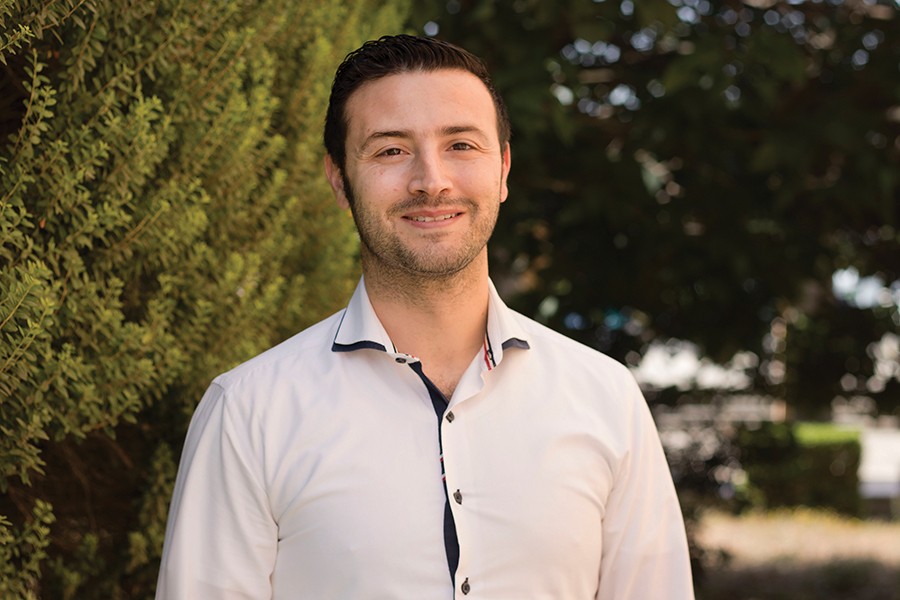
As consumers, we are all-too-familiar with the daily chore of charging our smartphones or tablet. With increasing emphasis on greener technologies such as electric vehicles and renewable energy generation, battery technology becomes more important.
Classic lithium-ion (Li-ion) batteries are currently the most common, storing energy in chemical form. The problem with these is their temperature sensitivity. During repeated cycles of charging and discharging, the chemical reaction that drives the battery creates heat which affects its storage capacity and lifetime. Not only that, but these high temperatures present a real health and safety concern. Thermal runaway, where a battery creates a vicious cycle of heat generation, can lead to catastrophic failure. Remember the Galaxy Note 7 explosions? So how can we cool batteries down?
Keeping things chill
While a number of studies have attempted to apply traditional cooling (such as the air cooling in the laptop I’m using to write this article) to batteries, this was found to be inefficient for high-performance battery packs. As air passes over the battery cells, it gradually warms up and its effectiveness cooling subsequent batteries deteriorates, leaving battery cells in the same pack operating at different temperatures. The battery cell with the highest temperature becomes the weakest link.
The need to have a fast charging mechanism, especially when it comes to consumer products, is real.
High temperatures limit dis/charging rates and energy storage capacity, causing batteries to degrade faster, dictating the life of the pack. While attempts to use liquid cooling proved to be more efficient than air cooling, they still did not solve the issue. To counter this problem, the industry has developed complex and expensive electronic battery management systems that monitor the temperature of each cell and adjust the charging rate. But again, while this protects the cells, it limits the current flow during discharging, causing long waiting times in between battery use. The need to have a fast charging mechanism, especially when it comes to consumer products, is real. Battery-powered electric vehicles, for example, are much more likely to be accepted if a fast charging mechanism is introduced. This would make them comparable with regular cars that need to be taken to traditional petrol stations for fuel.
A different approach
Our project NEVAC (short for Novel EVAporative Cooled battery technology) solves this problem with a novel cooling strategy. With NEVAC, we want to keep the entire battery pack at a uniform temperature. We’re using a liquid coolant with a low boiling point which absorbs latent heat as battery cells warm up. When the coolant reaches its boiling point, it evaporates and turns into gas. The gas travels to a cooler part of the battery pack, lets off the heat it has absorbed into the ambient environment, and condenses back to liquid, closing the loop of this self-sustained cooling cycle. As the coolant within the entire battery pack boils at a single temperature, all the battery cells within the pack are kept at one uniform temperature.
NEVAC is currently developing an experimental proof of concept of this technology with Abertax, our industrial partner. Following a proof of concept, the project will be scaled up with the prospect of developing the technology for the market. It will show how an improved battery cooling technology will lead to higher battery storage capacity, longer battery life, and better dis/charging rates. That daily chore of charging your smartphone for more than a few minutes could soon be forgotten.
The research is led by Dr Robert Camilleri (University of Malta), in collaboration with industrial partner Abertax Kemtroniks. Project NEVAC is funded by the Malta Council for Science and Technology Fusion: The R&I Technology Development Programme 2017.
Read more:
Selyukh, A., As Batteries Keep Catching Fire, U.S. Safety Agency Prepares For Change, retrieved on 30th March 2017
https://n.pr/2fBZsfJ
Author: Robert Camilleri
Maltese Gaming Goes Global
With ever more digital games companies opening their doors in Malta, standing out can be difficult. Dawn Gillies talks to Dorado Games co-founder Simon Dotschuweit to find out how a small company is carving out its niche in an industry of big players.
In 1974, long before the Internet was around, Mazewar introduced the world’s first computer-generated virtual world. With a serial cable to connect computers, friends could play over a network, competing with and against one another for the first time. The Internet now allows thousands of people from opposite sides of the globe to battle it out simultaneously in games set in online virtual worlds like World of Warcraft.
Digital gaming is an industry on the rise, and Malta has seen success after success. It’s a multi-billion dollar enterprise, taking in an astounding $30.7 bn globally in 2017 alone according to Statista. In recent years there has been a surge in free-to-play online games. With so many free games competing for our attention, you might wonder where the money comes from. It may seem counterintuitive, but these free online games sometimes generate higher profits than paid counterparts. Multiplayer PC beat ’em up Dungeon Fighter Online reportedly made an astonishing $1.6 bn in 2017.
With more than 30 digital games companies in Malta alone, it’s a competitive industry to take on. Yet Simon Dotschuweit and Nick Porsche have created Dorado Games, launched real-time grand-strategy game Conflict of Nations, and gained over 400,000 customers.
Porsche and Dotschuweit brought different skills to the table: Dotschuweit came from an IT and technology background, while Porsche gained his experience as creative director for the Battlestar Galactica online game.
Dorado’s Origin Story

Whilst working for the independent creators, publishers, and distributors of digital games Stillfront Group, Dotschuweit was already mulling over some new game ideas. The game engines, platforms, and building blocks were all at his disposal. What he needed was a collaborator. That was when Nick Porsche appeared on the scene.
Porsche and Dotschuweit brought different skills to the table: Dotschuweit came from an IT and technology background, while Porsche gained his experience as creative director for the Battlestar Galactica online game. Their ideas had Stillfront interested. They were in the early stages of building a game, and the endeavour was gaining support. ‘It was going well, and the company wanted to go ahead with it.’ Two years later, Dorado Games was acquired by the Stillfront Group.
When most of us think video games, we immediately think of games consoles. So why choose to create an online game? Or, for that matter, one that’s free?
Dotschuweit says, ‘They’re a lot more fun to do. You have more control. Usually you self-publish. You can do stuff more iteratively. You can release and then improve. With console games, you need a large publishing partner that will take a large portion of the revenue.’ With Dorado constantly striving to improve their online world for players, the ability to continually update was a big draw for them.

The world of online gaming better lends itself to strategy games. With Dotschuweit and Porsche already big fans, their goal was to create a game they wanted to play. Their business model is also better suited to online gaming than consoles. ‘It’s free to play, so we incentivise players to pay for extra features, which doesn’t work well on console.’ This is where the money comes from. Players pay to construct buildings or train their troops more quickly, giving them an advantage over the competition.
But Stillfront’s acquisition of Dorado meant it was decision time for Dotschuweit. He had to choose between keeping his comfortable job with Stillfront, or taking on a new challenge in the startup world. Living in China with his family at the time, the ramifications of that decision were huge. Porsche was already in Malta, incentivised by the Maltese government’s support of new businesses. In the end, Dotschuweit felt the opportunity to join forces was too great to pass up. He made the leap.
The Rise to Success
Money was key. Dotschuweit tells us, ‘We managed to secure quite a sizeable employment-based grant from Malta Enterprise for our company, which was of course a very nice plus. And Malta is a really nice place!’ The grant not only helped Dorado win over investors, but it reduced risk in an industry that’s infamous for its kill rate, both in-game and in real life. Suffice to say that coming out on top in the gaming world is not guaranteed.
Working in a start-up was also a change for Dotschuweit. Having previously worked for US tech giant IBM, he wanted to make a mark with this new venture. ‘You get to have a lot more impact. Your presence matters a lot more to a small business; it’s a lot more fun. You get to wear lots of hats and get a lot of experience.’ The busy and exciting nature of a small business appealed to him much more than clocking in to a regular office job.
The good times continued rolling with more support coming in from the University of Malta’s (UM) Centre for Entrepreneurship and Business Incubation (CEBI). CEBI houses the TAKEOFF programme which supports new businesses and provides facilities for them. Dr Joseph Bartolo and Prof. Russell Smith are familiar names when it comes to Maltese start-ups, and they have both been an influential part of Dorado’s story. They now operate from the TAKEOFF building on UM’s Msida campus.
But Dorado’s journey is not all smooth sailing. ‘We are a live service and we don’t have separate teams for operations and expansions, so that sometimes means your plans change!’ explains Dotschuweit. It’s all hands on deck to fix any problems. ‘It’s part of the bane and the fun of operations. But it doesn’t get boring!’ he says. This means that a day of meetings can quickly turn into a hectic day of making sure the game is running smoothly. They don’t want to disrupt players’ gameplay if they can avoid it.
In the past, Dorado hired game developers to bring their ideas to life. But this modus operandi changed when it came to Conflict of Nations. With this project, Dotschuweit and Porsche wanted more control, and they were ready to invest. They dug their heels in and hired their own team.
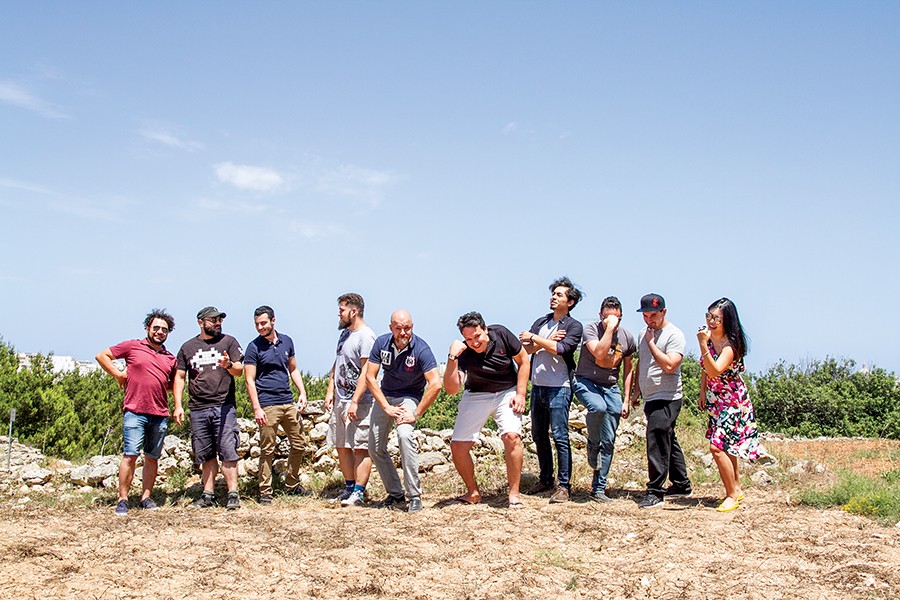
A game of political and military tactics with elements of espionage, Conflict of Nations requires real-world diplomacy skills to move up in the world. Unlike most other strategy games, it takes place right here on Earth, making use of Google Maps to make the game truly global.
Bringing their dream team to life was a challenge. ‘Finding talent back then wasn’t the easiest thing,’ says Dotschuweit. But their perseverance has seen them build a close-knit team who have all contributed to Dorado’s success.
The quest for perfection is a common theme in Dorado’s story. The perfect team, the perfect platform, the perfect game. Their commitment to giving players the best possible experience is a testament to their investment in their projects. Taking the time to get the right team together has proved to be one of the many reasons for Dorado’s fast climb up the games industry ladder. Another was getting their game out quickly to get fan feedback as soon as possible. The Stillfront platform restricts them somewhat in their design, as it wasn’t made specifically for Dorado, by Dorado, but it has reduced their workload massively, allowing them to get Conflict of Nations launch-ready in a fraction of the time. Identifying and taking advantage of opportunities has also been key to their quick rise.
Many Lessons Learnt
In the crowded world of online games, Dorado games has skillfully managed to carve out its place. Real-time negotiations and political tactics in Conflict of Nations are the stand-out features for fans who enjoy the long timescales and mental strategy involved. With this victory under their belt, we’ll soon see more from Dorado. They have plans to develop another game this year.
With years of experience in the industry, Dotschuweit has some advice for any future gaming entrepreneurs. ‘Get it out fast and get feedback. You can always improve it later.’ He notes the success of game jams in turning ideas into businesses and urges people to get involved. So, what are you waiting for?
Author: Dawn Gillies
Young hearts run free
For the first time in Malta, a cardiac screening programme for young people aims to identify who among them are most at risk of sudden cardiac death. Here, Laura Bonnici chats with Dr Mark Abela to learn more about the Beat It project and the impact it is having on young lives across Malta.
There are times in life when death haunts us all. It is most tragic when it strikes down our youth. This year, Italian footballer Davide Astori and Belgian cyclist Michael Goolaerts made headlines after they died unexpectedly. Also making headlines was sudden cardiac death (SCD).
Ischaemic heart disease is the most common cause of cardiac deaths, its likelihood increasing with age. A blockage in one of the arteries supplying the heart starves it of oxygen and nutrients, leading to heart attacks, sometimes resulting in cardiac arrest, in which there is sudden and unexpected loss of electrical heart function. But SCD in young people is very different from cardiac death later in life.
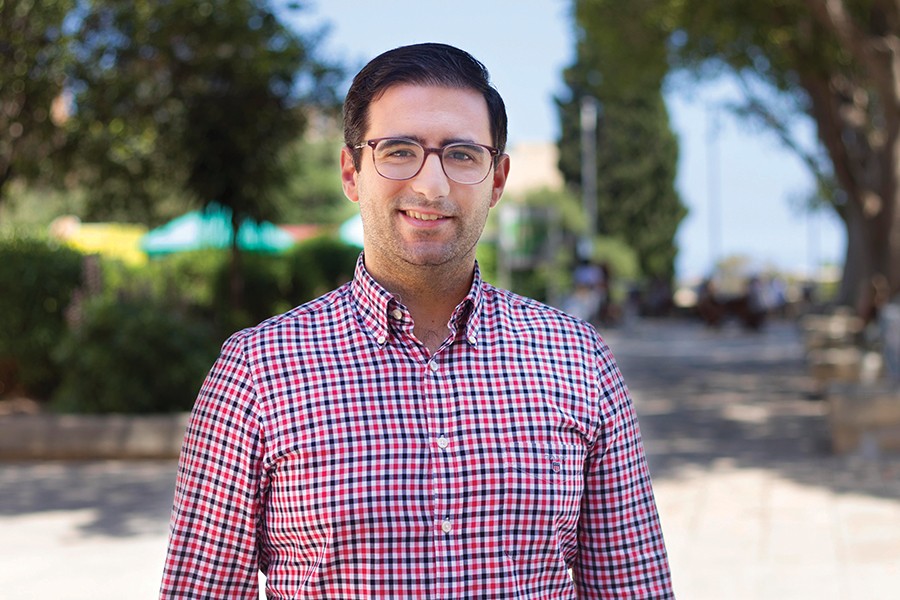
Much like Astori and Goolaerts, SCD victims are generally presumed to be in good health. Early symptoms are often incorrectly attributed to other issues or life changes. The result is a horrendous loss for the sufferer and their family and friends, who also have to weather biological, psychological, and social repercussions. Seeing these events unfold, specialist trainee in Cardiology Dr Mark Abela felt the time was right to offer an SCD screening programme to young people in Malta. He called the project Beat It.
The idea behind Beat It was inspired by the UK-based NGO Cardiac Risk in the Young [CRY], Abela notes. ‘CRY offers screening to young people between 14 and 35 to identify those who might be prone to heart disease. They then give follow-up advice, support, and evaluations accordingly. I realised that a similar programme would be very beneficial to young people here in Malta,’ says Abela.
In Malta, the Beat It project has focused mainly on fifth form students between the ages of 14 and 16. The cardiac screenings attempt to identify those who may be susceptible to SCD, with those prone to it referred to hospital for further tests to catch the condition before it can strike.
‘Because athletes are believed to be at a higher risk for SCD, we need to have routine screening across all sporting disciplines,’ says Abela. ‘Sport has shown the medical community that young individuals who are susceptible to genetic heart disease are still at risk of SCD. Screening helps decrease this burden. Current evidence also supports that this risk is present for non-athletic youths—so why neglect these youngsters?’
Launched officially in October 2017, the Beat It project saw nine doctors, accompanied by a team of technicians and nurses, going into schools and running screenings. Students filled in a simple questionnaire and took an Electrocardiogram (ECG) test on the spot. ‘We analysed the results in the hope of identifying heart disease in the early stages, then advised the young people if they should consider some lifestyle changes,’ says Abela. This included advice ranging from easing up on tennis, to which career choices might be most appropriate for the student based on their health. The team also advised further medical treatment and organised follow-up appointments with specialists Dr Mark Sammut, Dr Tiziana Felice, and Dr Melanie Burg in some instances. In the end, the project screened 2,700 of the 4,300 eligible fifth form students across Maltese schools, all with the support of the school administrators and teachers, who ensured that everything ran smoothly.
The significance of this project could also reach well beyond the lives of the young people themselves. ‘Since the country is so small and families are often inter-connected, genetic diseases in Malta tend to be more prominent,’ Abela emphasised. ‘The discovery of susceptibility to hereditary cardiac disease in any young person therefore also suggests that their parents or siblings may be at risk of SCD. With appropriate testing, the ripple effect of Beat It could preempt problems in entire families, maybe even saving someone’s life in the process.’
The project boosted awareness of cardiac disease and SCD for Maltese young people, their parents, and their teachers. UK data reports that eight out of 10 young deaths do not report symptoms beforehand. There is also a tendency for symptoms to be downplayed by educators who are not aware of potential problems. With this in mind, Beat It will also act as a learning platform. Since young people with cardiac abnormalities are at higher risk for exercise-related symptoms, physical education teachers are now more aware about potential red flags.
Celebrating the completion of the Beat It project, Abela expressed his gratitude for the team who made it possible. ‘The incredible dedication and teamwork of everyone involved has helped Beat It to effect positive change in young people’s lives, potentially saving some in the process.’
Note: The Beat It project is a collaboration between the Cardiology Department at Mater Dei Hospital, the Ministry of Education, the University of Malta, and the Malta Heart Foundation and is supported by corporate sponsors including Cherubino Ltd. through the Research, Innovation and Development Trust (RIDT) and TrioMed.
Author: Laura Bonnici
Openness: The case of the Valletta Design Cluster
Valletta should be a unique experience, open to all. This is Valletta 2018’s key vision for the bustling capital. A group of people focused on making this a reality is the Valletta Design Cluster team. Located at the Old Abattoir site in Valletta, the initiative is going to create a community space for cultural and creative practice. Words by Caldon Mercieca.
According to Anna Wicher from the PDR International Centre for Design and Research, design is ‘an approach to problem-solving that can be applied across the private and public sectors to drive innovation in products, services, society and even policy-making by putting people first.’ This people-centred approach to design is not just a theoretical framework, but a concrete method that engages people in a co-creative process.
By bringing together people active in the cultural and social spheres, we want to have a concrete and meaningful impact on Malta’s diverse communities. We aim to provide support for students, start-ups, and creative enterprises and give social groups the necessary tools to empower those with different interests who nonetheless share the common purpose of using creativity for the social good. We also want to provide a new networking space for everyone. From students, to cultural and creative professionals, to residents, budding businesses and civil society groups, everyone will be welcomed at the Valletta Design Cluster.
This philosophy of openness and diversity is one that has permeated every aspect of the project from the very beginning. Over the past three years, we have consulted with residents, students, schools, higher education institutions, artists, makers, and creatives to build the vision for the space. A range of public and independent organisations are also contributing to the project, providing both expertise and generous support.
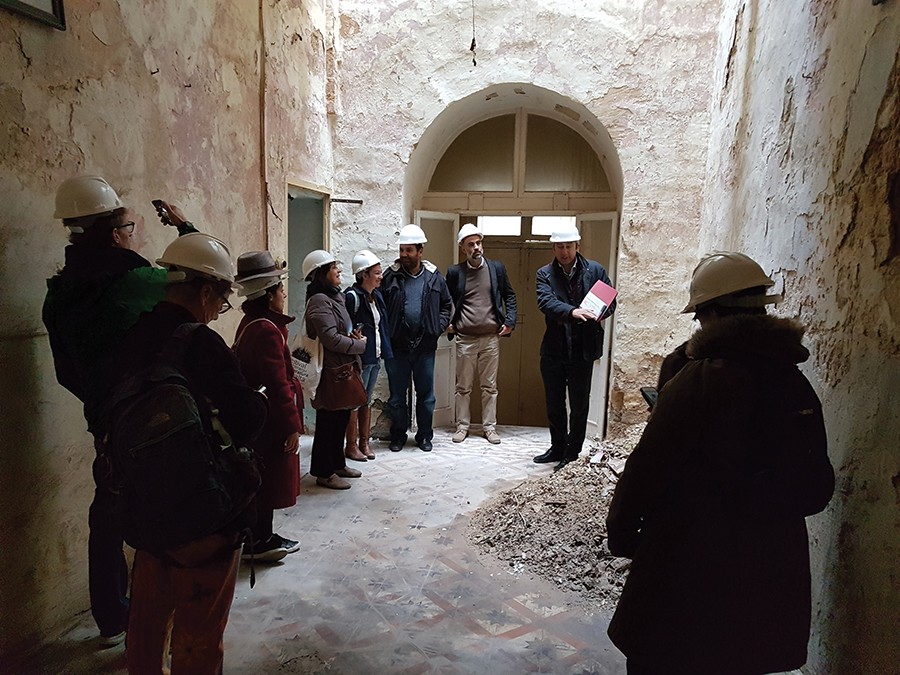
Thanks to the support from the European Regional Development Fund, the physical space for the Cluster as well as the urban public spaces around it are currently undergoing serious regeneration. Once finished, the Cluster will have a range of facilities, which were decided on following consultation with potential users. It will include a makerspace, coworking spaces, studios, a food-space, several meeting rooms and conference facilities, an exhibition space, and a public roof garden. All of these facilities have benefitted from input contributed by various potential users, by residents, and by organisations that have been interacting regularly with the team working on the Valletta Design Cluster.
We believe that a community can only truly reach its potential when it opens itself up to collaborations which share a common goal. This does not mean turning a blind eye to the challenges faced by the community on a daily basis, or to the ever-evolving scenario that surrounds it, but rather cultivating a readiness to learn, an aptitude to develop networks built on trust, and a capacity to address problems with a practical, positive, can-do attitude.
One valuable experience we are developing with our community stakeholders is Design4DCity. This annual initiative, which the Valletta Design Cluster team started back in 2016, sees creatives, residents, and local authorities joining forces to rework and improve a public space. We worked with the Valletta community in 2016, and continued with the Birżebbuġa community in 2017. In 2018 we plan to work again in Birżebbuġa as well as in Siġġiewi, and will involve children and young people in our public space projects. Such initiatives are providing very important insights into the application of collaborative, co-creative approaches involving multiple stakeholders.
But the work of the Valletta Design Cluster is not restricted to the restoration or transformation of space. For the past three years, we have collaborated with the Malta Robotics Olympiad, teaming up with artistic curators and student organisations from the University of Malta (UM) to design and construct the pavilion for Valletta 2018. By the end of the project, participants had constructed a fully-recyclable 300 square meter pavilion and presented it to the public. This year we also supported SACES, the architecture students’ association at the UM, through a number of design and construction workshops. Branching out, we have done work with a number of creatives from various backgrounds in projects involving video-capture, artifact-curation, narrative development linked to cultural identities, and flexible use of available space through appropriately constructed spatial modules.
Several workshops have also been held where project stakeholders were fully involved in training sessions, with the aim of building skills in user-centred design, applied to specific contexts. This meant interacting with students, researchers, creatives, residents, and organisations in developing what the Cluster can offer. One tool used in this process is the construction of a user persona, where the characteristics, interests and concerns of the user are gathered through interaction with potential users of a service. Students from a number of faculties have also provided their input in this process through dedicated workshops at the UM.
They also stressed that the Cluster needed to serve as a catalyst for networking and for strengthening entrepreneurial skills for people working in the creative sector.
All of this has become possible thanks to continuous collaboration and international networks which have contributed their resources to our projects. To assist us in this, the Valletta 2018 Foundation has joined Design4Innovation, an Interreg Europe project bringing together eight European countries all working towards using design to benefit society.
While we have been on the receiving end of a lot of support, translating our philosophy of openness into practice involved an element of risk. During a series of tours that we organised on site for potential users of the Cluster, we had to be open to various views and perspectives about what the Cluster could be. Participants highlighted issues related to accessibility and affordability as key concerns. They also stressed that the Cluster needed to serve as a catalyst for networking and for strengthening entrepreneurial skills for people working in the creative sector. In some cases, we had to revisit some of our plans and open new discussions with the architects to made adjustments. On other occasions, we called people in again to discuss their ideas further and see how we could integrate their suggestions into our vision.
Although we speak of cultural and creative industries, we should realise that the average number of people working in any single company is two. Indeed, 40% of designers in Malta are actually freelancers. The challenge for the Valletta Design Cluster here is to ensure flexibility and adaptability both in the physical infrastructure as well as the management of the Cluster. In this way, we can make the facility relevant for our users’ current needs, as well as cater to future ones.
The next stage in understanding our community of potential users better is to work together on the creation of a Design Action Plan. The Design Action Plan will highlight concrete actions to be undertaken by the Cluster during the first three years of its operation. It will serve as the main reference tool to structure the Valletta Design Cluster’s interaction with its community of users, practitioners, enterprises, and beneficiaries. Based on this open process, the Valletta Design Cluster aims at establishing itself as a new community-driven platform for cultural and creative practice in Malta.
Author: Caldon Mercieca
Sharing is caring, but at what cost?
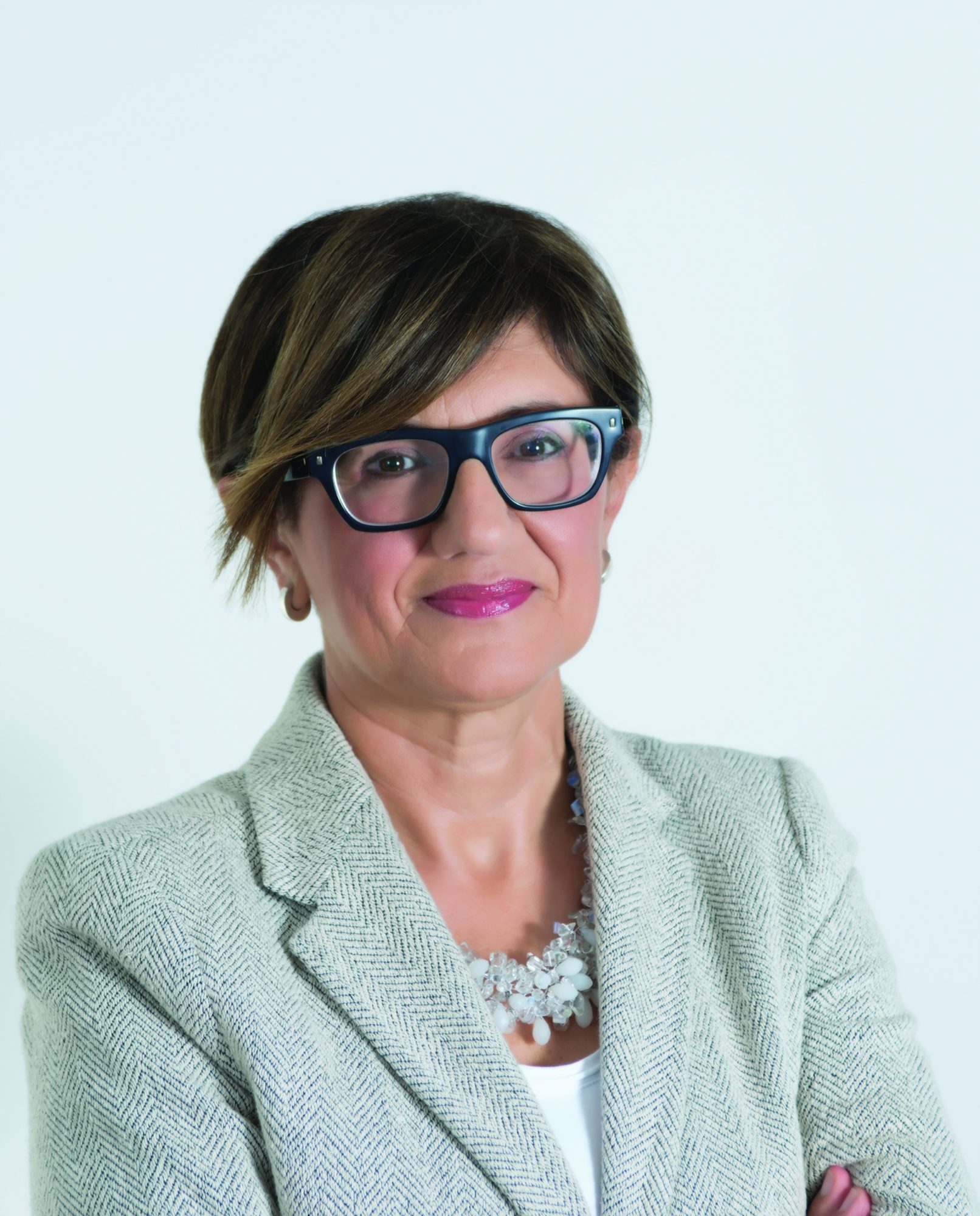
Life is hard sometimes. Juggling the demands of work with family while remaining healthy and sane can be tough. Done successfully, that lifestyle can look like a carefully choreographed dance. Add a bout of the flu to the mix though, and the dance gets thrown off. Now you find yourself strewn on the dance floor, with hurdles coming your way.
So far, mothers in our societies have carried the lion’s share of caring responsibilities and bear the Motherhood Penalty, affecting their earnings and career progression, amongst many other things. The International Labour Organisation claims that closing the gender gap in caring responsibilities between women and men is a priority for social development in the 21st Century.
The European Union (EU) is proposing a series of measures which aims to do exactly that. The first tackles paternity leave. At the time of writing, men in Malta are allowed at most two days off from work when they become parents. Under the new scheme, fathers will be able to take at least 10 working days of paid paternity leave around the birth of their child. When it comes to parental leave, a non-transferable quota of four months will be reserved for each parent to take, up until the child is 12 years old. It should be noted that 90% of fathers across the EU do not make use of parental leave at present. Finally, there is caring leave for workers who care for seriously ill or dependent relatives. These people will be entitled to five additional days of paid leave.
Whilst these three initiatives make sense, when analysed through the gender lens, the reality is that when people make use of these measures, they will not be compensated in full, but at the replacement rate of compulsory sick pay level. This immediately sets off the alarm bells.
Taking parental leave could mean a reduction of around 80% in income. Are Maltese parents, especially fathers, willing to accept such a drastic pay cut with every new child that arrives, along with a spike in costs? The result will be that fathers are likely to shun this additional leave, while mothers may be more prone to take the extra leave at the reduced pay rate. This will simply reinforce gender roles and gender stereotypes.
The aspect of this law that equates parental and caring leave to sick leave has to be removed. Parents manoeuvring through the fast lane of life and trying to care for their children by taking paternity, parental, or caring leave are not sick, so why pay them as such? Why impose a parental penalty on parents who are bringing up the next generation of citizens? The EU needs to do some serious rethinking if it really wants to contribute to the most significant social development of the 21st century.
Author: Dr Anna Borg
Reinventing our campus
The University of Malta is a second home to thousands of students, academics, researchers, and staff. The question is: Is the Msida campus being used to its fullest potential to welcome and serve all these people? Following the M.Arch program at the Faculty for the Built Environment, a group of students turned their critical gaze towards the spaces in and around the Msida campus to answer this question.

There is no special formula for producing a design strategy. It is equal parts critical thinking and creativity. However, there is a key truth that helps frame things for designers: create the space as though you are using it yourself. In this case, the students were already users. As a result, they designed solutions for campus spaces wearing not only a ‘student hat’ but a ‘design, user and evaluator’ hat. They thought of planning tools, SMART objectives, space, and evaluation standards. They also considered the ‘eight dimensions of product quality management: performance, features, reliability, conformance, durability, serviceability, aesthetics, and perceived quality.
The designs show how spaces should reflect the way people really want to use them.

In the end, student Alison Galea brought life back into the light well inside the Faculty for the Built Environment, turning it into a student hangout area with a lounge and relaxation room. Jessica Galea re-visited the outdoor space at the science lecture theatre to make way for some creative outdoor furniture and futuristic shapes intended for breaks between lectures. Brandon Saliba re-thought the Quad ditch, introducing new seating with versatile materials and better-managed spaces, perhaps encouraging others to soak in the summer sun during the end of semester time, preempting the much-needed summer break.
The designs show how spaces should reflect the way people really want to use them. Once designers place themselves as users in the centre of the project and build solutions around those needs, the gap between design for its own sake and design used to make change begins to close.
Author: Dr Rebecca Dalli Gonzi






